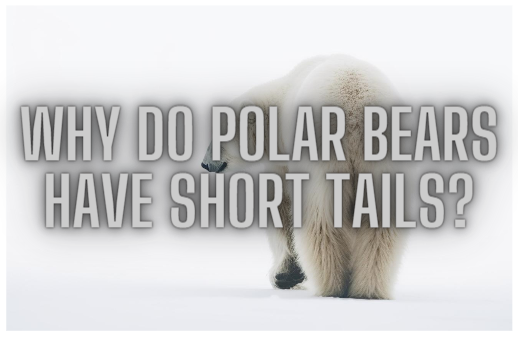Polar bears (Ursus maritimus) are iconic Arctic predators, renowned for their powerful physique and resilience in extreme environments. One distinctive physical feature that sets them apart from other bear species is their short tail. In this article, we will explore the possible reasons behind the evolution of short tails in polar bears, examining various theories and considering their ecological significance.
Adaptation to Arctic Environment
Polar bears have evolved a range of specialized adaptations to thrive in their icy habitat. Their short tails are considered one such adaptation, specifically tailored to suit their needs in the harsh Arctic environment. Understanding the purpose behind this unique feature requires examining the challenges polar bears face and how their anatomy helps overcome them.
Efficient Heat Conservation
The Arctic environment poses extreme cold temperatures, and heat conservation is crucial for polar bear survival. The relatively short tail of a polar bear helps minimize heat loss. Since the tail has a relatively small surface area compared to the rest of the body, it reduces exposure to the cold air and water, preventing excessive heat dissipation.
Swimming and Maneuverability
Polar bears are exceptional swimmers, relying on their swimming skills to hunt and navigate the Arctic waters. A short tail provides several advantages in their aquatic lifestyle. It creates less drag, allowing for more efficient and agile movements in the water. The reduced length also enables better maneuverability, facilitating quick turns and changes in direction while chasing prey or navigating through ice floes.
Balance and Stability
Polar bears often traverse uneven and unstable surfaces, including sea ice and snow-covered terrain. Their short tails contribute to better balance and stability in these challenging conditions. With a lower center of gravity and a compact tail, polar bears can maintain balance and negotiate treacherous landscapes more effectively, reducing the risk of falls or injuries.
Genetic and Evolutionary Factors
The evolution of the short tail in polar bears is likely a result of genetic factors and selective pressures over time. The unique environmental conditions of the Arctic, coupled with the need for efficient heat conservation and aquatic mobility, may have favored individuals with shorter tails. Over generations, these adaptations became more prevalent within the polar bear population.
Final Thoughts
The short tail of the polar bear is a remarkable adaptation that plays a crucial role in their survival and success in the Arctic ecosystem. From heat conservation to improved swimming abilities, balance, and maneuverability, this unique feature provides numerous advantages for polar bears in their icy habitat. Understanding the evolutionary significance of the short tail enhances our appreciation for the intricate adaptations of these magnificent creatures and their ability to thrive in one of the harshest environments on Earth.

